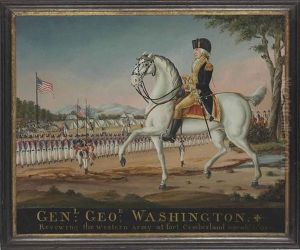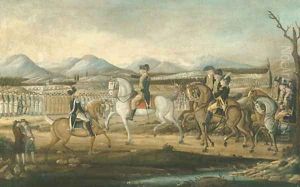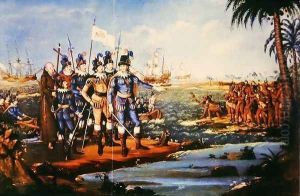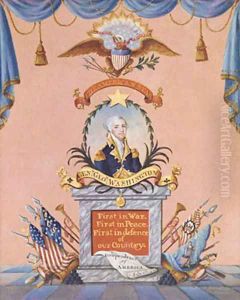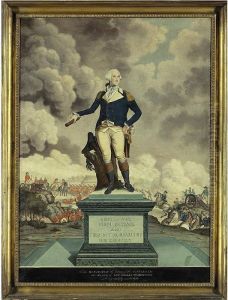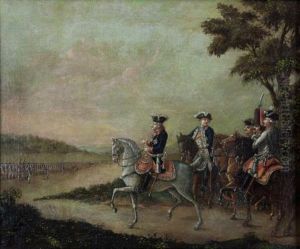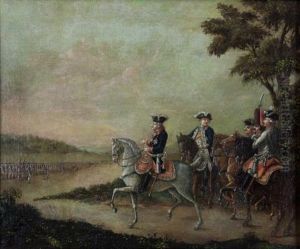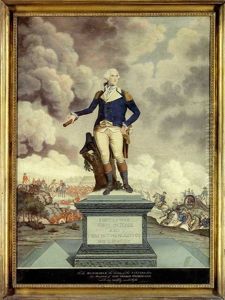Frederick Kemmelmeyer Paintings
Frederick Kemmelmeyer was a painter of German descent who was active in the United States during the late 18th and early 19th centuries. Although the precise details of his early life are not well-documented, he is believed to have been born between 1755 and 1760, possibly in Germany or Austria. He emigrated to the United States prior to establishing himself as an artist, and his first known activities in the country date from the 1790s.
Kemmelmeyer is best known for his work as an itinerant artist, a common practice of the time where painters traveled from place to place seeking commissions. He worked primarily in the Mid-Atlantic and Southern United States. His oeuvre includes portraits, as well as historical and allegorical scenes. Notably, he painted portraits of important figures of his time and scenes that captured the spirit of the young American republic.
One of his most recognized works is a series of paintings depicting George Washington, which attest to the artist's admiration for the first president of the United States. Kemmelmeyer's portraits are characterized by their vivid colors and detailed depictions of clothing and accessories, which provide insight into the fashions and aesthetics of the Federal period in America.
Kemmelmeyer's style was influenced by the folk art traditions of the period, and his work is an example of the self-taught artists who contributed to the cultural landscape of early America. Despite his contributions, he did not achieve significant fame during his lifetime, and many of his works were attributed to him posthumously, as interest in early American art grew and scholars began to research and catalogue these artists' works.
The artist's later years are as obscure as his early life. He continued to work as an artist until his death in 1821. Today, Frederick Kemmelmeyer's paintings are considered important artifacts of American art history, particularly as they reflect the early national period and the artistic practices of itinerant painters. His works can be found in various American museums and are studied for their historical as well as artistic value.
